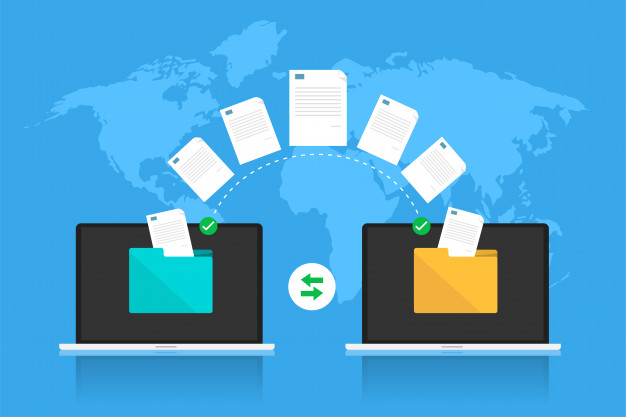How to Launch a Successful Website

Earlier most of the businesses tended to acquire space in the brick-and-mortar stores for running the business.
People used to visit personally in stores to get some information about the products and services, but nowadays, the expansion on the technological front has given a new shape to the business world with the help of the World Wide Web (www).
WWW was launched roughly around twenty years ago, almost two decades ago, but looks like people have got the awareness of started making the most use of websites rigorously these days.
To start a new business, the very first thing that is looked into is the – ‘Website’. Of course, the website is the initial source of information that gives us the precise material for what we usually stumble upon on websites.
For all the business owners and entrepreneurs who want to launch their website be it in e-commerce, online marketplaces, design & development, or digital marketing, businesses are taking a rapid upturn as website-making is carrying an exponential growth with the rise in technology advancements.
Why do businesses fail to take off a successful website?
For every unsuccessful website, umpteen reasons could be held responsible if we start counting like improper business strategy, lack of management planning; scarcity of funds, less market research, the unattainability of a good team and so on.
The dedicated, we know that there is nothing more painful than not being able to launch a website on time. To our surprise, there is an eye-opening fact that more than 60% of start-up websites miss the mark to establish their name globally and eventually witness a failure rate.
On the contrary, ample good reasons can make your day if we pitch the right course of track to make a successful website plan. Hence, to avoid mistakes a resourceful, well-thought-out and planned roadmap is a must for launching a website.
We know there is a lot of pressure while making the website for the first time wondering whether it will go right or not.
So, just take a relaxed breath!
Keeping our user thoughts in mind, we have come up with the right step-by-step journey for launching a website that would be the right fit for you.
YOU MIGHT ALSO LIKE: Website Redesign – 10 SEO Mistakes to Sidestep
1. Get Hold of a Unique Domain Name
A lot of people get confused between wordpress.com and wordpress.org for getting the domain name registered for their website.
As more people are registering website domain names at a rapid pace, the domain name buying on ‘Godaddy’ reached 49.98% as of December 2018 and the domain buying is dynamically growing 3.5% year on year without fail.
So, get a hold of a domain name which suits your business niche and is/are easily available to purchase.
Otherwise, you can also increase your pocket value by buying a hefty and expensive domain name as per the availability and choice.
You may visit websites like name.com or godaddy.com to check the availability and buy a domain of your choice.
2. Dedicated and Secure Web Hosting Server
Unbelievably, every year people lose billions of dollars due to slow website performance, which results in conversion rates dropping to 7%.
Do you know why?
Most entrepreneurs and business owners “buy” hosting from local vendors at cheaper rates which ultimately shows adverse results at a later stage.
Advice is to use a solid, reliable and quality web hosting provider who offers enough storage space and secures your entire data with fewer chances of being lost.
There are a few sites that offer reliable, reasonable and scalable web hosting and storage like GoDaddy, Hostinger, Bluehost and others.
3. Pick Your Squad
A team is one whose efforts look up in the work. Indeed you are the owner of your business, and while choosing the people of your taste is what matters the last.
Your selection of team members should be well-versed with the ins & outs of a particular field for which they’re being hired, and their knowledge should be optimum for the growth of your business.
For instance, as you are launching a new website – you require UX/ UI web designers, web developers like WordPress or PHP developers, content writers for writing website content, SEO executives or digital marketing executives, perhaps, etc. You need to analyze the professionals whom you require to be hired.
To run a successful website, you must hire experienced professionals because you can’t invest much time to hire freshers and train them initially.
However, we understand freshers can be hired at a lower salary package but hiring experienced professionals could be like investing a little more money but it would be worth your time and helpful to run the business in the initial stages.
So, choose your crew wisely! We know you won’t risk picking non-fervent people in your team.
4. Well-Designed UX Rich Site
What do you notice first when visiting some websites? Surely, we see the layout, design, overall structuring, content and theme.
Well, an interesting fact revealed that 38 percent of customers showed no interest in website engagement if the layout or content of the website is unattractive or not pleasing.
For instance, a client arrived at your website and to his surprise, he found a prevalent website theme, unsystematic layout pages, very dull colour choices and theme, and less content about your offerings – what do you think, would he like to close a deal with you?
Probably, the answer is No!
Hence, to make a user-centric website, the design and layouts must attract the customer/ visitor in the first go.
5. Create User-Friendly Content
For every website to succeed, its content must be easily readable and understandable by the users.
People prefer reading user-friendlier content which should not hamper their reading convenience.
For instance, if you are reading some articles and at a point, where you feel the content has tough words or jargon, surely you will stop reading the article thereof and leave the page. Isn’t it?
Therefore, always create content which is written keeping in mind your targeted audience that helps to pull readers to your website.
MIGHT ALSO LIKE: What is White Hat or Ethical SEO and Its Benefits
6. Use of the Right Technology for Better Performace
Well, the right use of technology is a must to enhance your site’s productivity.
About 40% of users tend to leave a page that takes around 3 seconds longer to load than the usual time.
The percentage rate has reached 79 per cent wherein dissatisfied buyers are less expected to purchase again from the same site, as a result of bad or slow site performance.
When you are building a new website right from scratch, you must use modern and user-friendlier technology which is good, secure to operate and easily adaptable for the users.
No user wants to use the website which has challenges in operating that.
So, it is recommended to choose and use technological advancements after a thorough market exploration that suits your requirements.
Better to hire a techy person or take a bit of technical consultant advice to handle this part if you are unaware of this segment.
7. Time for Quality Testing/ Bug Fixing
Every project is incomplete without the complete testing of the website. Otherwise, how would you know snags are persisting and creating an obstacle in between?
The most crucial part is to make the site bug-free and every page is running smoothly without flaws. On top of it, your website should be mobile-friendly so that if any visitor opens the website from a phone, the site should not represent an unsystematic layout or perhaps, the visitor is unable to open all the pages.
So, have you fixed all the bugs after following all the steps above?
If not, then must do it now to avoid blunders at a later stage. Or else, this won’t leave a good impression on the visitor.
8. Set Goals to Generate Traffic
After making the website, the initial question strike is – how to generate traffic?
Certain prevailing trends always dominate the previous strategies.
The most popular and recent content marketing strategies mainly consist of three elements – case studies (64%), and blogging (36%).
You need to make good use of digital marketing solutions to pull traffic, generate leads and increase your brand’s viability effectively.
Now, here the role of digital marketing professionals comes into the picture. Sit with them, strategize your goals, set a target audience to pull traffic and here you go!
9. Embrace Social Media Channels
As we have discussed in the above point, 65% of traffic comes from social media so you need to embrace social media channels closely.
Hire a digital marketer or make yourself fully competent to run your SM platforms to make your presence felt.
The most prevalent social media channels are Facebook, LinkedIn, Twitter, Instagram, Tumblr, Pinterest, and others.
You just need to opt and stay updated on these channels by posting regular updates which are relevant and useful for your audience, to increase your brand reach and awareness.
Moreover, the trend of paid advertising over organic one is whopping the online industry because it brings results very fast and is one of the best ways to increase the reach of your brand.
The organic reach is somewhat less, and business owners and entrepreneurs are vastly opting the paid and sponsored ads to achieve their goals and objectives.
As per one survey, 51% (in short- over 240 billion dollars) is anticipated to come from digital media, of all advertisement money that has been spent in 2019 worldwide.
10. Reassure Content Through Analytic Metrics
We know you are almost ready to launch your first site now.
However, have you reassured your content part over and over again? Content is the most regarded part after site layout or theme which leaves the last impression of your offered products or services.
In the B2B community, patrons only focus on your offerings other than how good you have made the site.
The prominent way to check your content performance is easy now. There are various platforms such as Google Analytics, Google Search Console, and Facebook Pixels which help you track the performance of your content.
To create a comprehensive flawless impact on users, make sure you have checked your content carefully before making it live.
MIGHT ALSO LIKE: Facebook Messenger Marketing for Boosting Business Leads
11. Pre-launching Checklist Before Website Launch
So, we have gone through the entire step-by-step guide to making a successful launch of the website. Before proceeding further you must ensure all the check-points or site pre-launch checklist precisely before you launch your site live publically.
IT’S TIME TO KICK-START YOUR WEBSITE
What do you need other than a complete guide to website making on its own?
Do you need a special brick-and-mortar space to run your business – NO!
Would there be affluent money involved to start your website- NO!
Can you launch a website with just a few bucks in the pocket – YES!
To meet the needs of the hour, launching a website successfully is the biggest concern of entrepreneurs and business owners.
These turn-key solutions help to make the website launch cost-effectively, and smoothly to perform better.
After all the checking, you need to create a post-launch checklist wherein your site performance has to be analyzed, site speed is to be monitored, traffic is to be evaluated, leads should be generated, business growth seems to be fair and good maintenance from time to time is essential.
How to Launch a Successful Website Read More »


